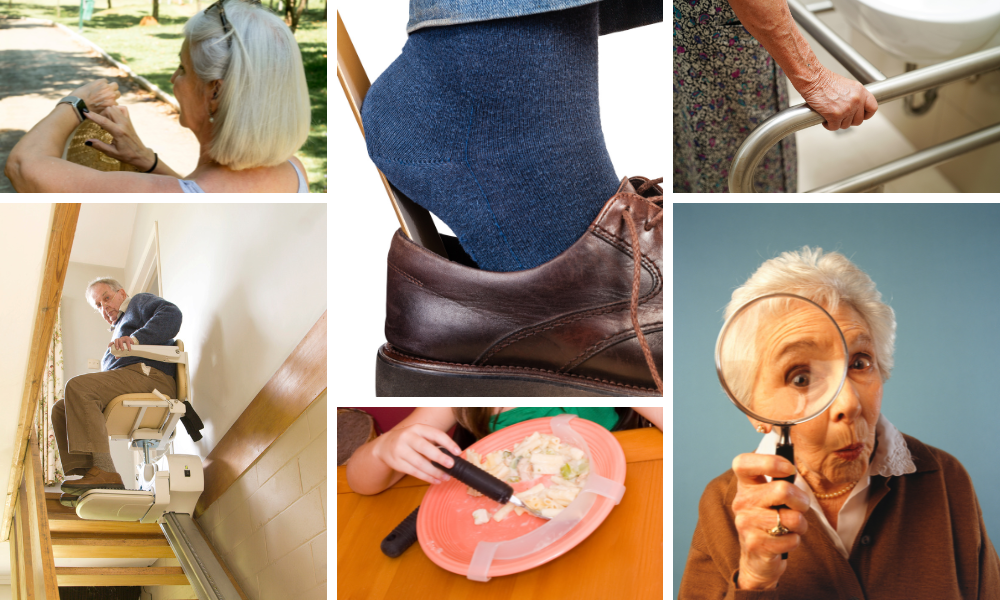
As we age, simple daily tasks can become more challenging. However, Aides to Daily Living (ADLs) are designed to support seniors in maintaining their independence, safety, and quality of life. Whether it’s getting dressed, preparing meals, or moving around the house, these tools help make everyday activities easier and safer.
Aides to daily living are assistive devices that help seniors perform essential daily tasks with greater ease. They can range from mobility aids to adaptive kitchen tools and even smart technology. These products allow seniors to maintain their independence longer while maintaining dignity and a better quality of life. Let’s explore some of the different types of ADLs.
Mobility Aids: These provide stability and support to prevent falls when individuals are facing difficulty with walking or standing. These aids can include canes, walkers, wheelchairs and stair lifts. Mobility aids can help you navigate your environment safer and longer with reduced fear.
Dressing Aids: Aging, arthritis and joint replacements can make getting dressed and undressed a daunting task. Dressing aids can help you maintain your dignity longer in the clothes that make you feel like you. Button hooks, zipper pulls, elastic shoelaces and shoehorns are all examples of dressing aids. Don’t overlook some simple adaptations such as sitting while putting your pants on and Velcro clothing.
Bathing & Hygiene Aids: The bathroom can be the scariest room in the house as it is one of the most common places for falls. Applying aids in the bathroom can increase the level of safety. Some examples of bathing and hygiene aids are grab bars, shower chairs, raised toilet seat with handlebars, handheld showerheads and long handled hygiene aids. All these aids prevent or reduce the need to bend over therefore increasing your safety, independence and dignity.
Kitchen & Eating Aids: Cooking and eating can become stressful as our abilities and dexterity decrease. Kitchen and eating aids can make mealtime more pleasurable, as it should be. Electric can openers, utensils with built up handles, spill-proof cups and no slip mats are all great examples of aids. Implementing some or all these aids can take some of the strain away and increase independence.
Vision & Hearing Aids: As we age, we generally need to increase our glasses prescription and turn up the volume. Magnifiers, electronic readers, large print books, hearing aids, talking clocks and smart watches can all aid in maintaining a positive quality of life with social interactions.
Fall Prevention Aids: Falls are scary and can change your life in an instant. Small changes can make a large impact on your ability to remain safe while navigating your environment. Non-slip rugs, motion sensor lights, cord covers, handrails and bed rails can all be easily implemented in your home.
Smart Technology: Technology continues to improve every day. When used properly, it can increase independence and peace of mind for both the user and their family members. Thanks to consistent technology advances, the price of modern technology aids continues to become more affordable. Voice activated assistants such Siri, Alexa and Google can be placed in every room and even on your wrist. Smart thermostats, medical alert systems, electronic monitoring systems and security cameras are all examples of smart technology aids.
Aids to Daily Living can be positive solutions to empower aging in place while maintaining independence safely with increased dignity. Whether you are planning for your future, a loved one or exploring a career in this field, incorporating these tools can greatly enhance daily life.


